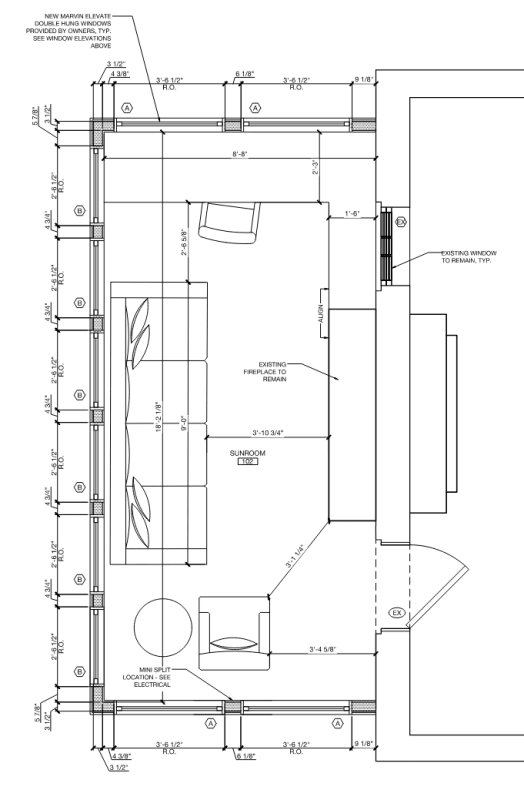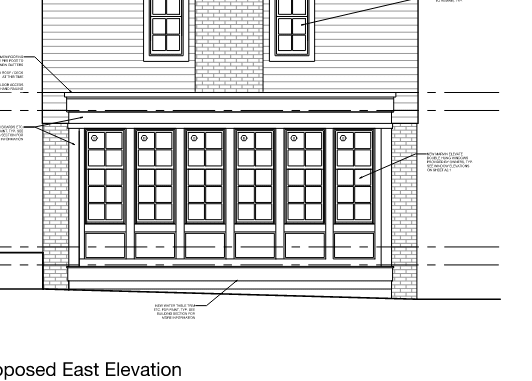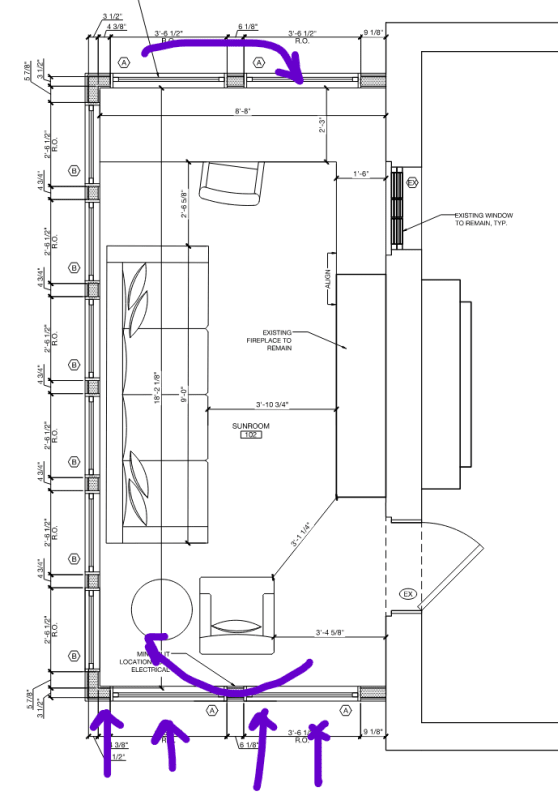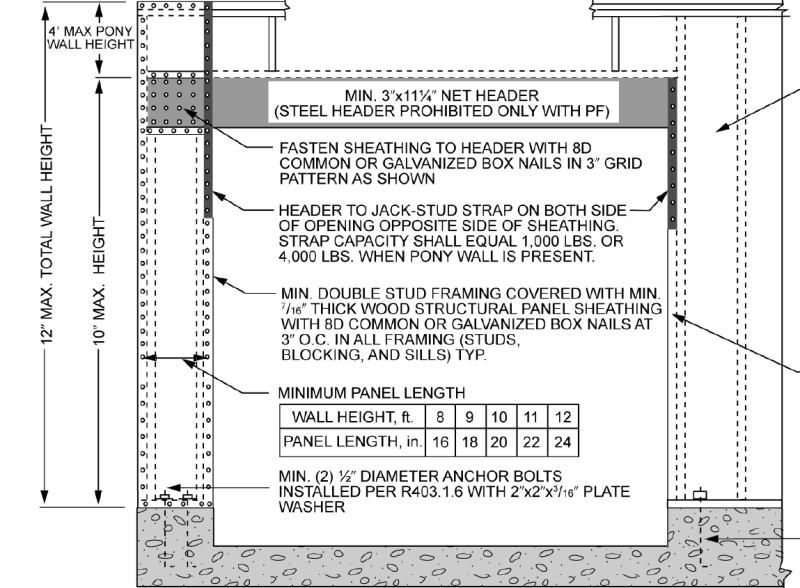mfstructural
Structural
- Feb 1, 2009
- 230
I'm designed a small three seasons room addition to a house and had a question regarding shear walls. The addition is 20'x9'x9'(H), see attached files. There are windows around the perimeter of the room. At first I was thinking of running headers below and over the windows(between the posts, so having posts go from foundation to underside of roof, so there would be a double 2x at top of the wall as well) and using a Simpson corner post cap to provide rigidity at the corners. If it's a rigid structure I was thinking it would want to rotate like a couple (see last image attached). For wind load of 20psf this is a T=C=(20psf*9'*4.5'(H))/20'=40 lbs. Does this seem like a reasonable approach? for a 40 pound load, some lags or anchors between the addition and existing structure will be adequate.
The other option is to provide a shear wall or steel frame at the 20' long wall. The architect is asking what is the minimum length of wall we need at the corners for shear. Right now it's approximately 1'-5" from corner to window. I have not run any numbers but there are many windows. From a practical standpoint, there is a similar three seasons room there now with all windows with no evidence of movement.
Just trying to figure out the best most economical way to approach this.
Thanks,





The other option is to provide a shear wall or steel frame at the 20' long wall. The architect is asking what is the minimum length of wall we need at the corners for shear. Right now it's approximately 1'-5" from corner to window. I have not run any numbers but there are many windows. From a practical standpoint, there is a similar three seasons room there now with all windows with no evidence of movement.
Just trying to figure out the best most economical way to approach this.
Thanks,







